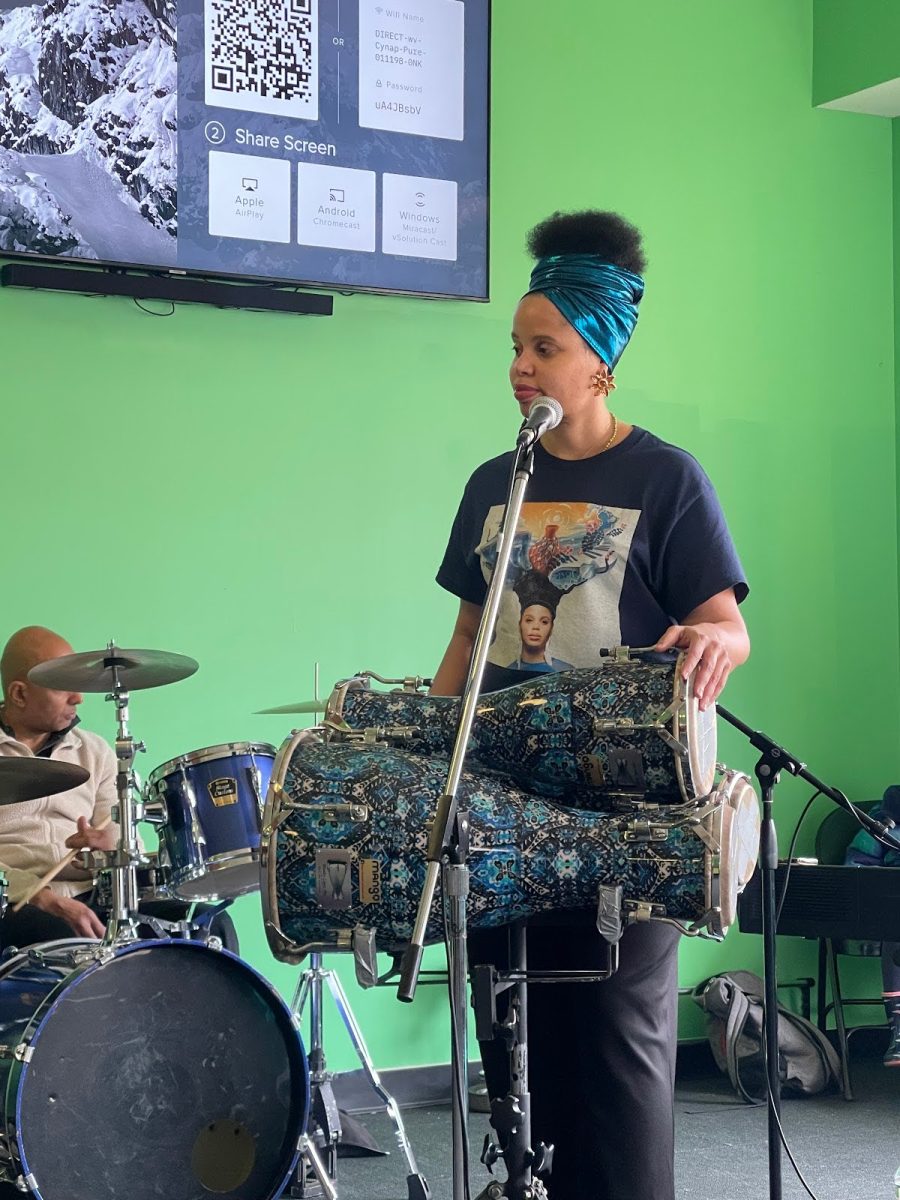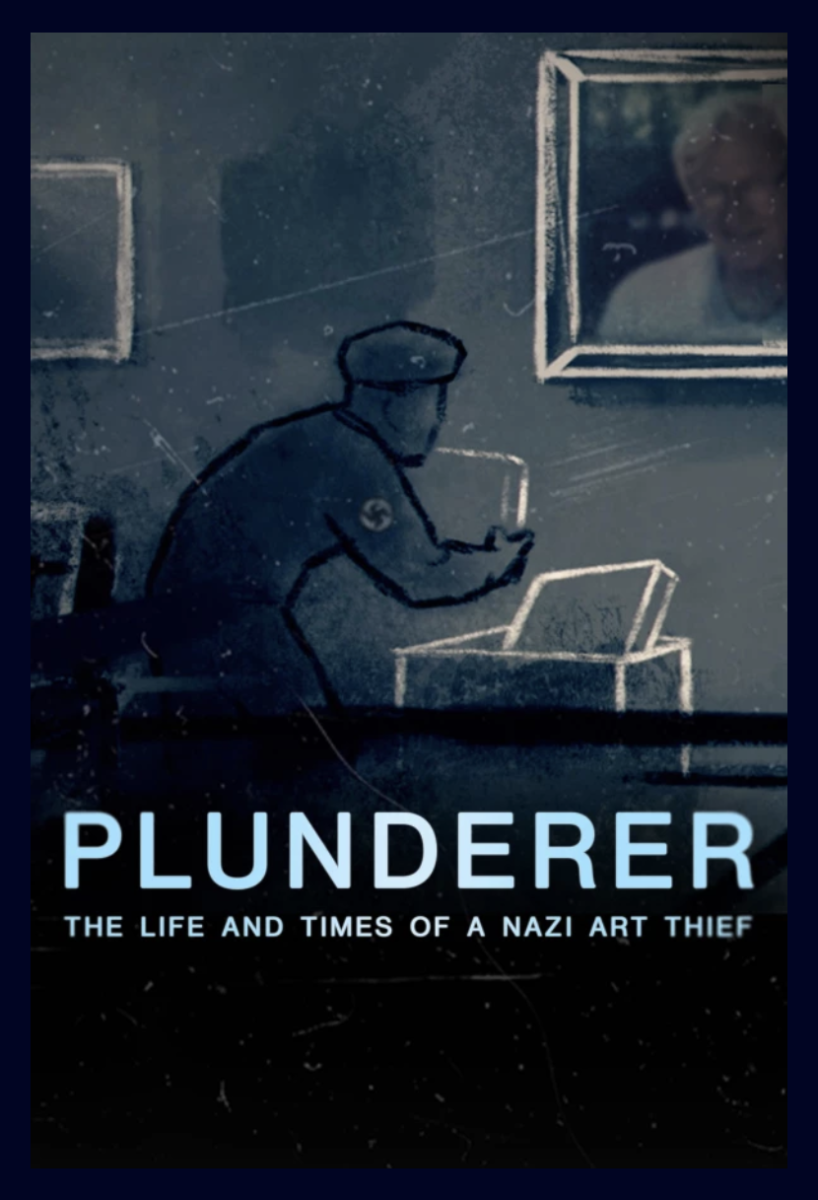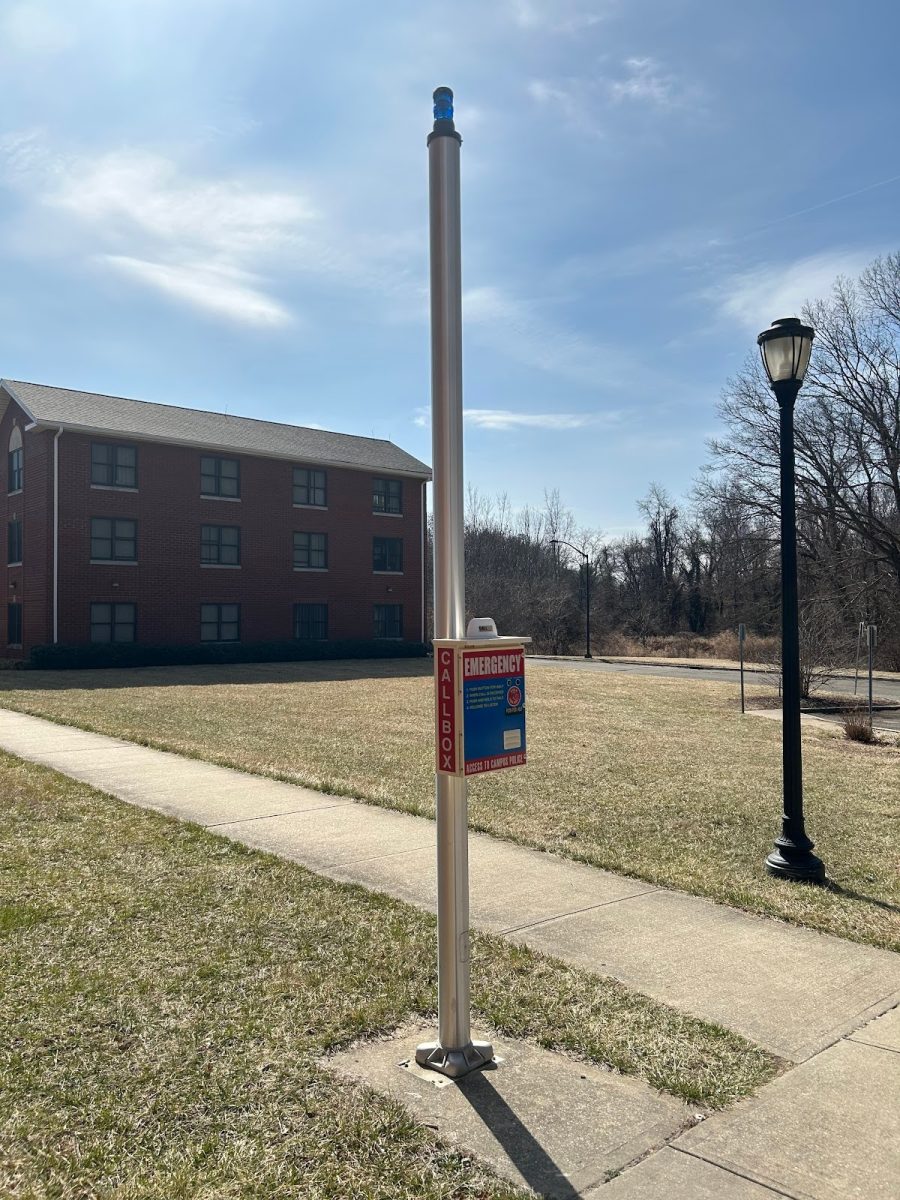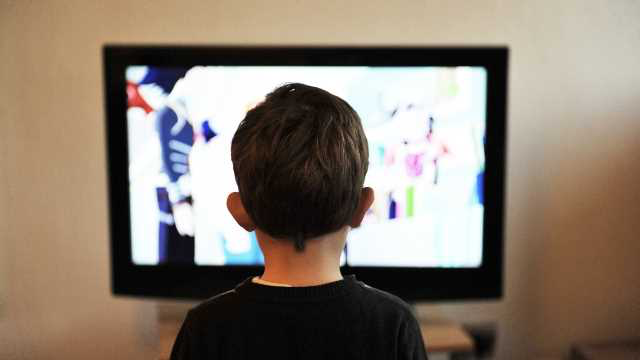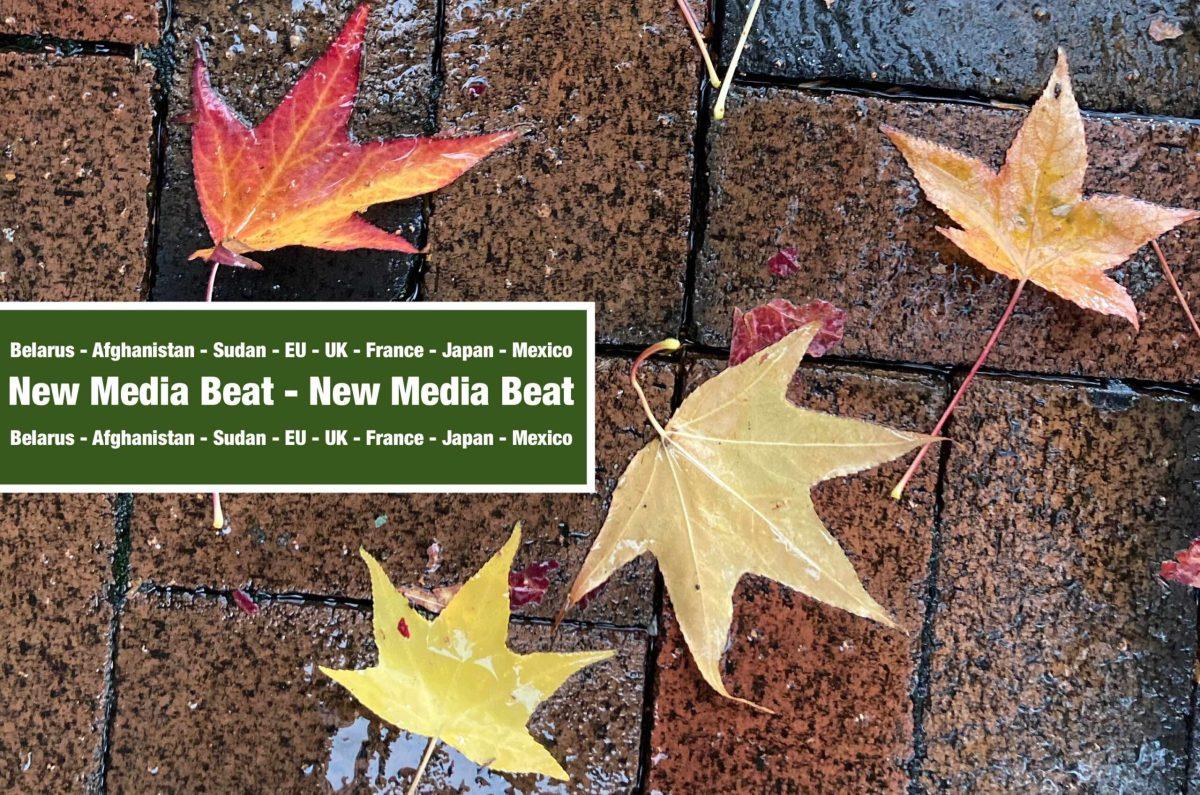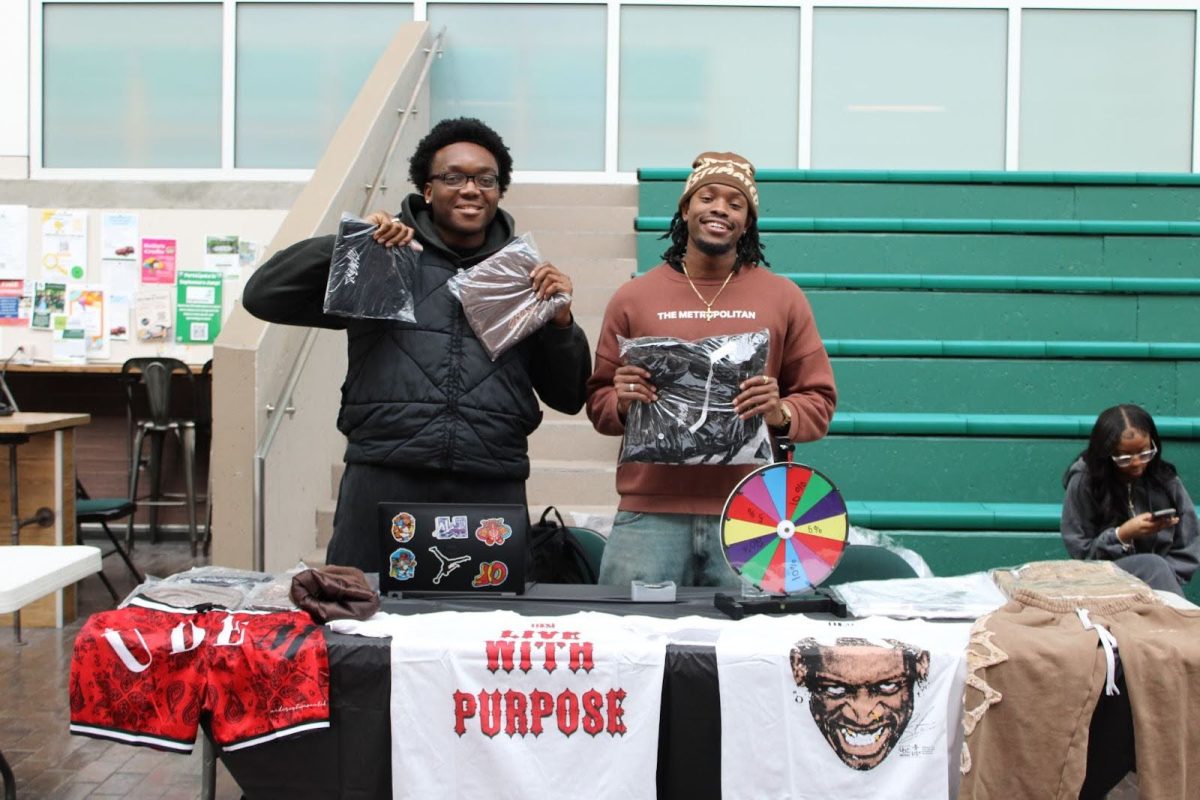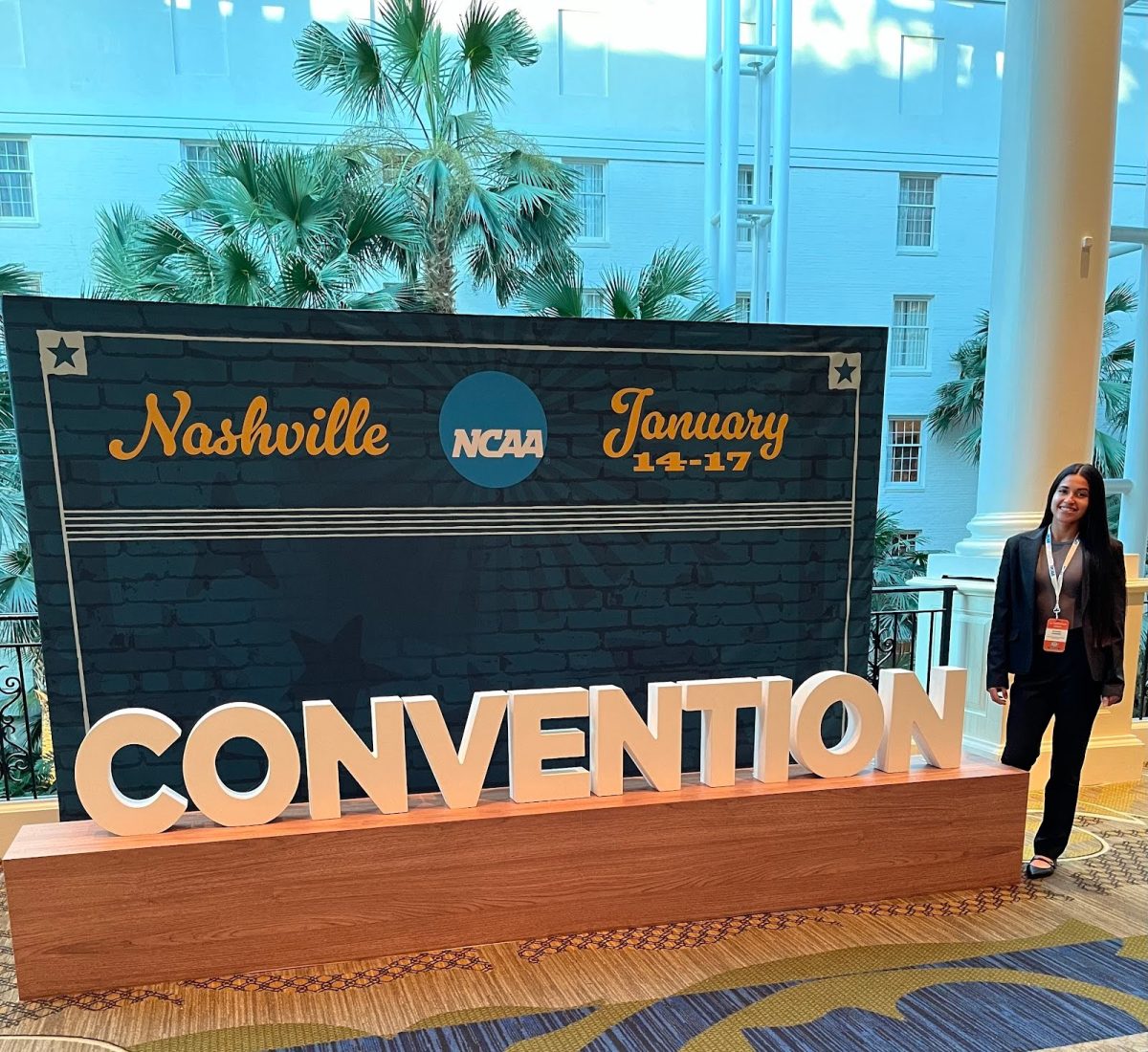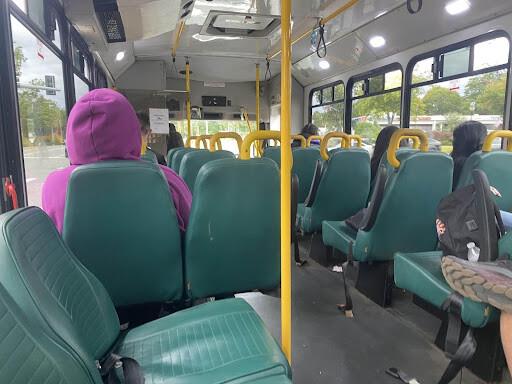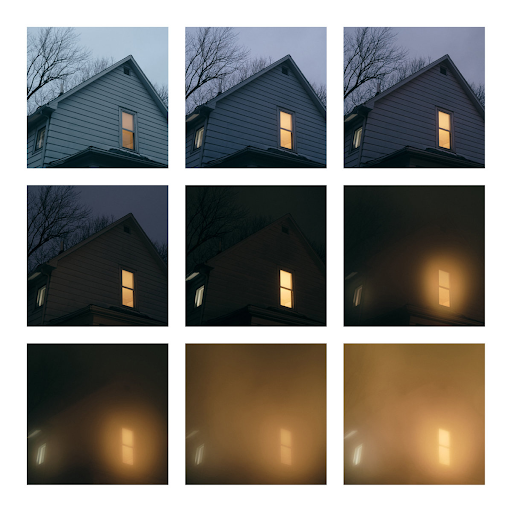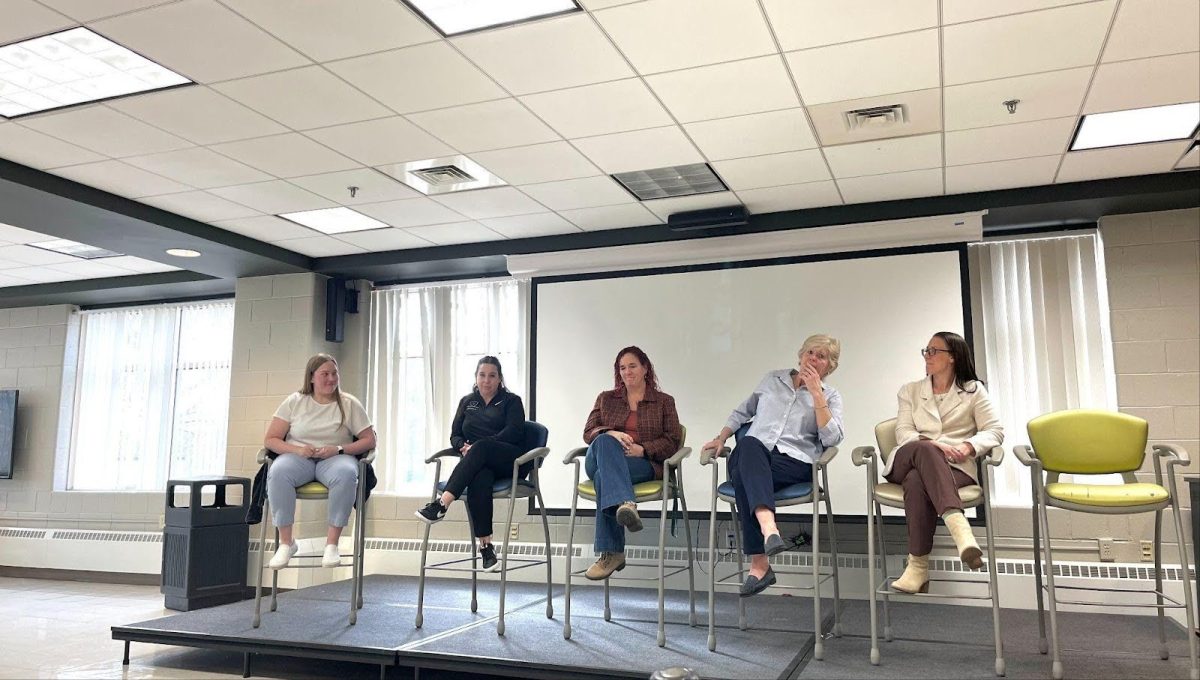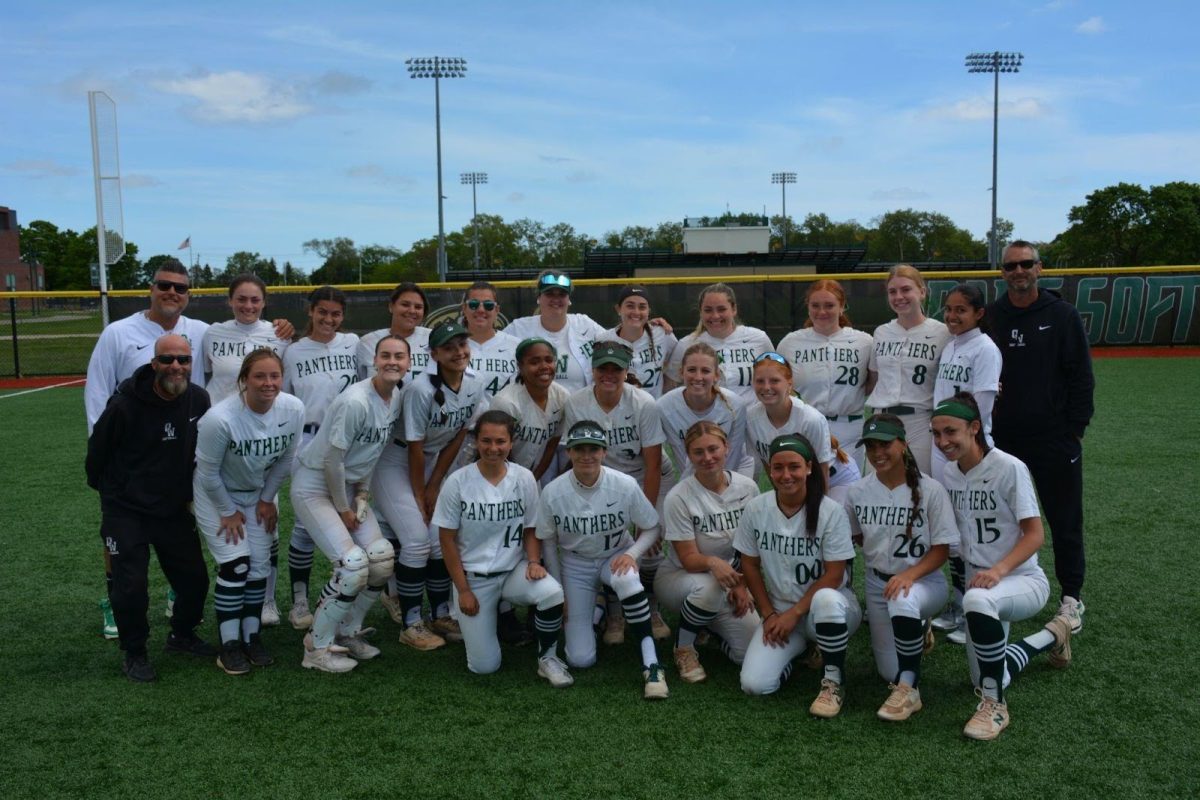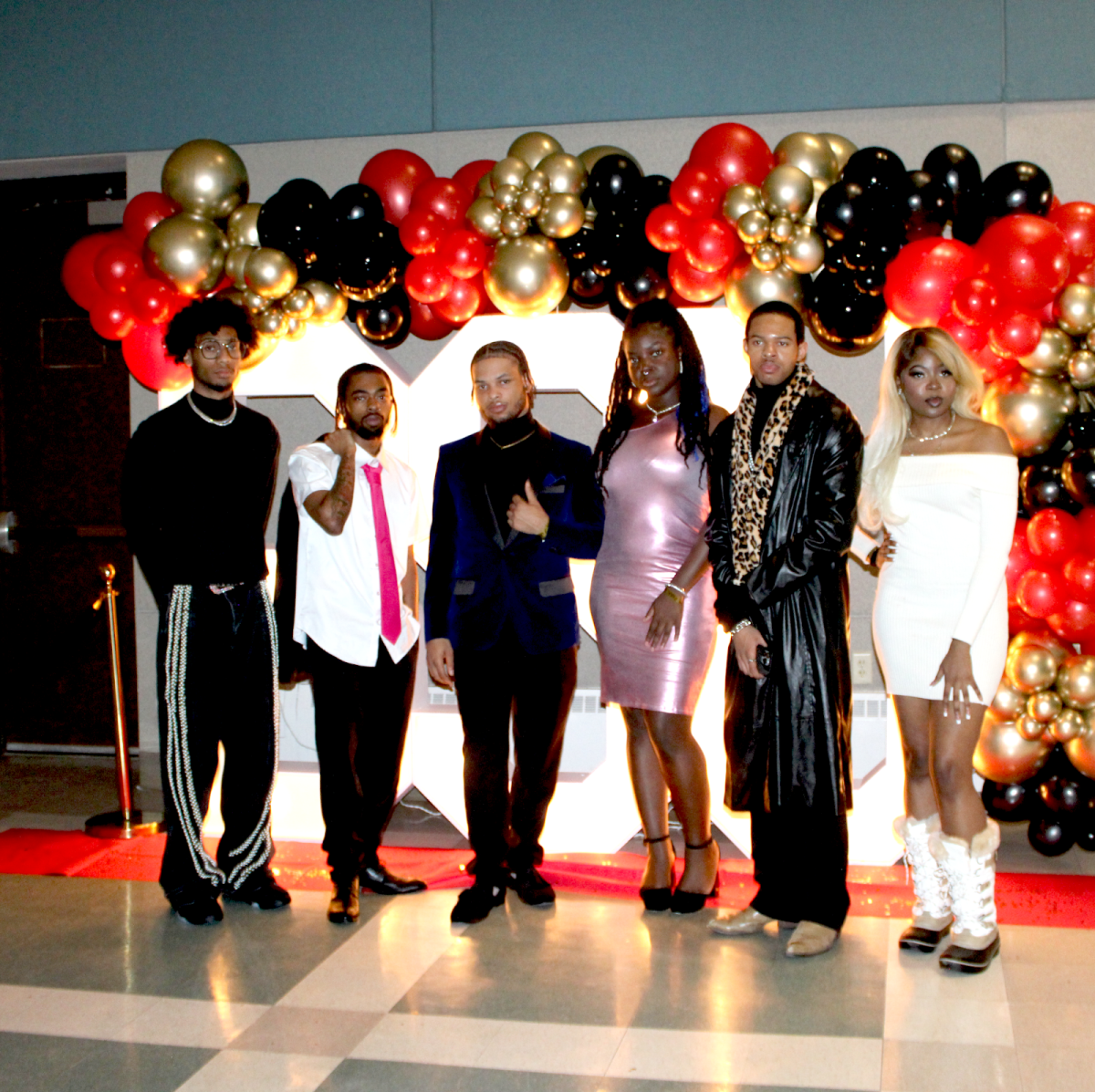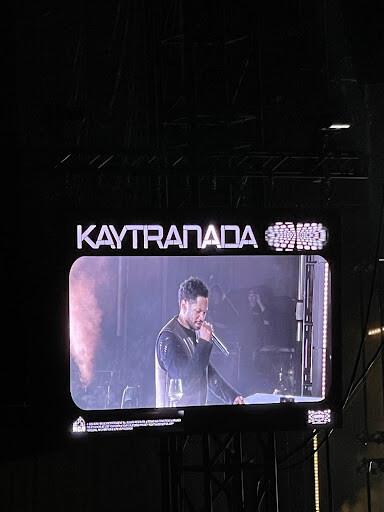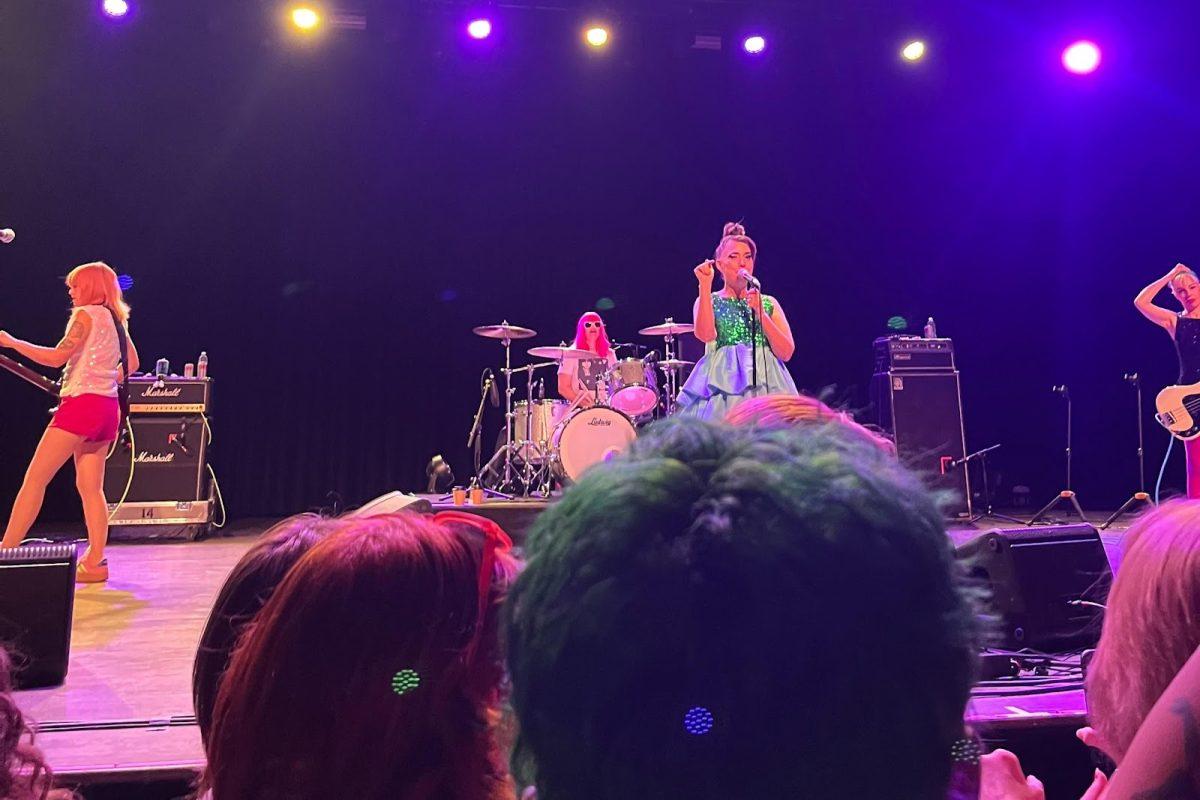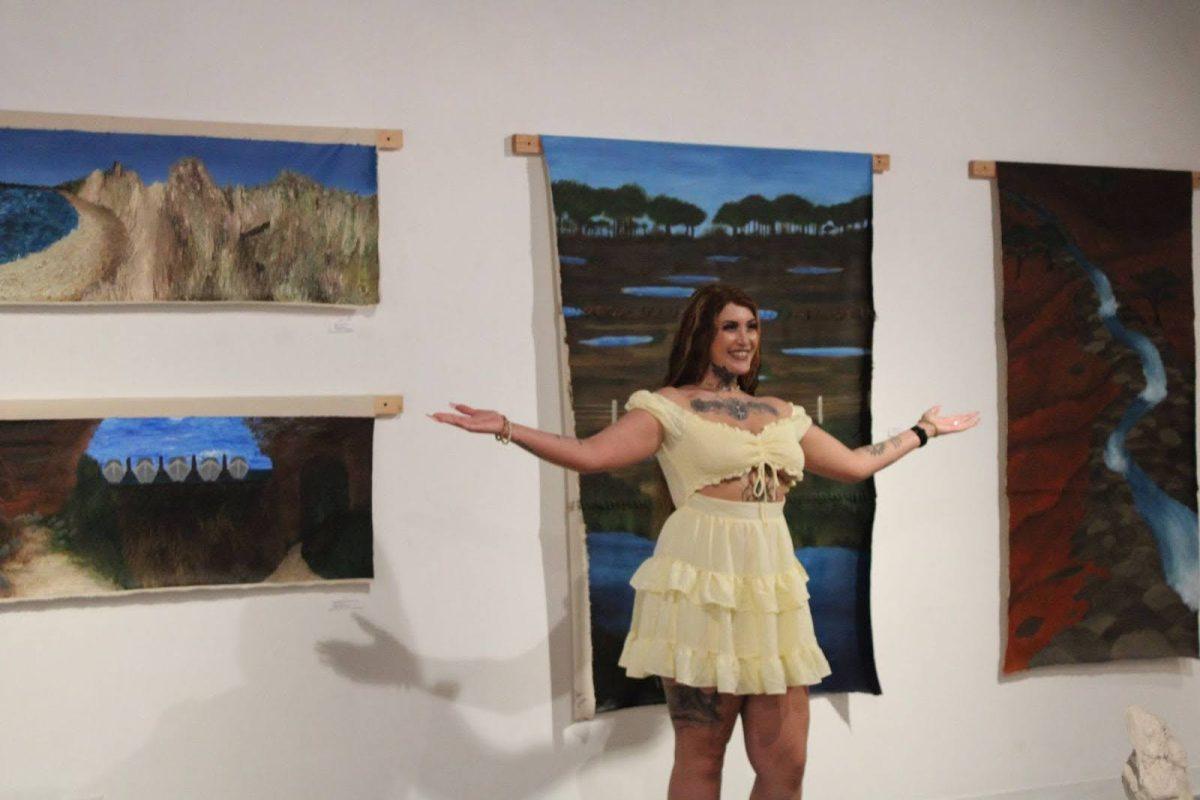
The Amelie A. Wallace Gallery exhibited the thought-provoking work of talented B.A, B.S. and B.F.A, students of the SUNY Old Westbury’s Art department from May 9 to May 16.
The B.A. & B.S. students whose work was on display included Angelica Joy Albejar, Jessie Dolan, Chioma Ezemma, Jordan Gonzalez, Mekhi Green, Tommie Huertas, Josephine Iaccarino-Modni, Alexandra Ketcham, Kristiana Laplanche, Amanda Linken, Logan Mcnamara, Kyle Myhand, Janice Ospina, Jessica Rodriguez, Isabella Rosenthal, Feliz Sanchez, and Leann Taylor.
The B.F.A. artists were Kayla Hancock, Nicolas D’amato, Gianni Budes, Kristel Carbajal, Dimitri Ramos, and Bre’Anna McQueen.
Professor Catherine Bernard was the faculty advisor for the exhibit. How was the show organized? “The students and I do that together,” the professor said when asked how she curated the exhibit. “It’s a collaboration.”
Each floor of the exhibit corresponded to a certain theme; the first was about mythology, the second was about the environment, and the third focused on print media. However, there were many outliers so the themes were more like guidelines than rules.
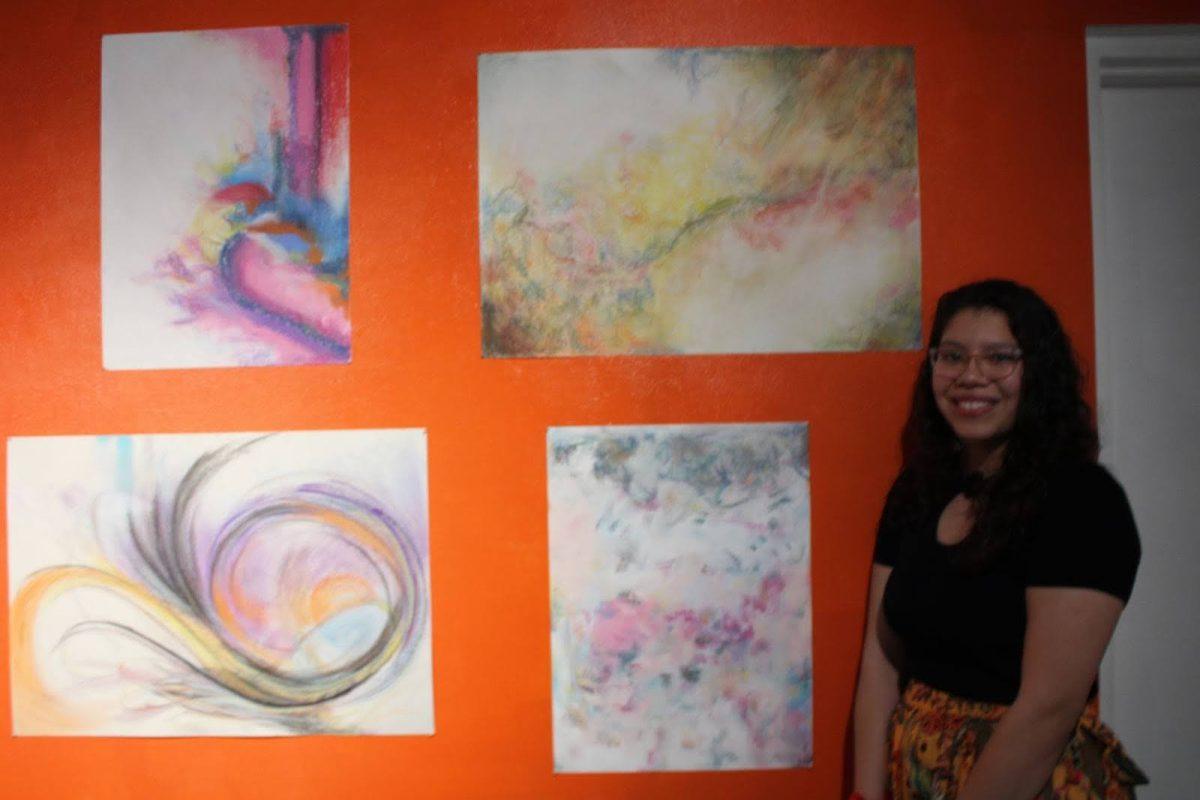
Jessica Rodriguez is one such outlier. Her abstract process paintings were created while she listened to music. “Each individual piece is based on a song,” she said. “I listened to jazz, pop, indie, one of them’s a Disney song,” she laughed. But these works aren’t just about a song. They stand alone as wispy portraits of what she was feeling as pastel hit paper.
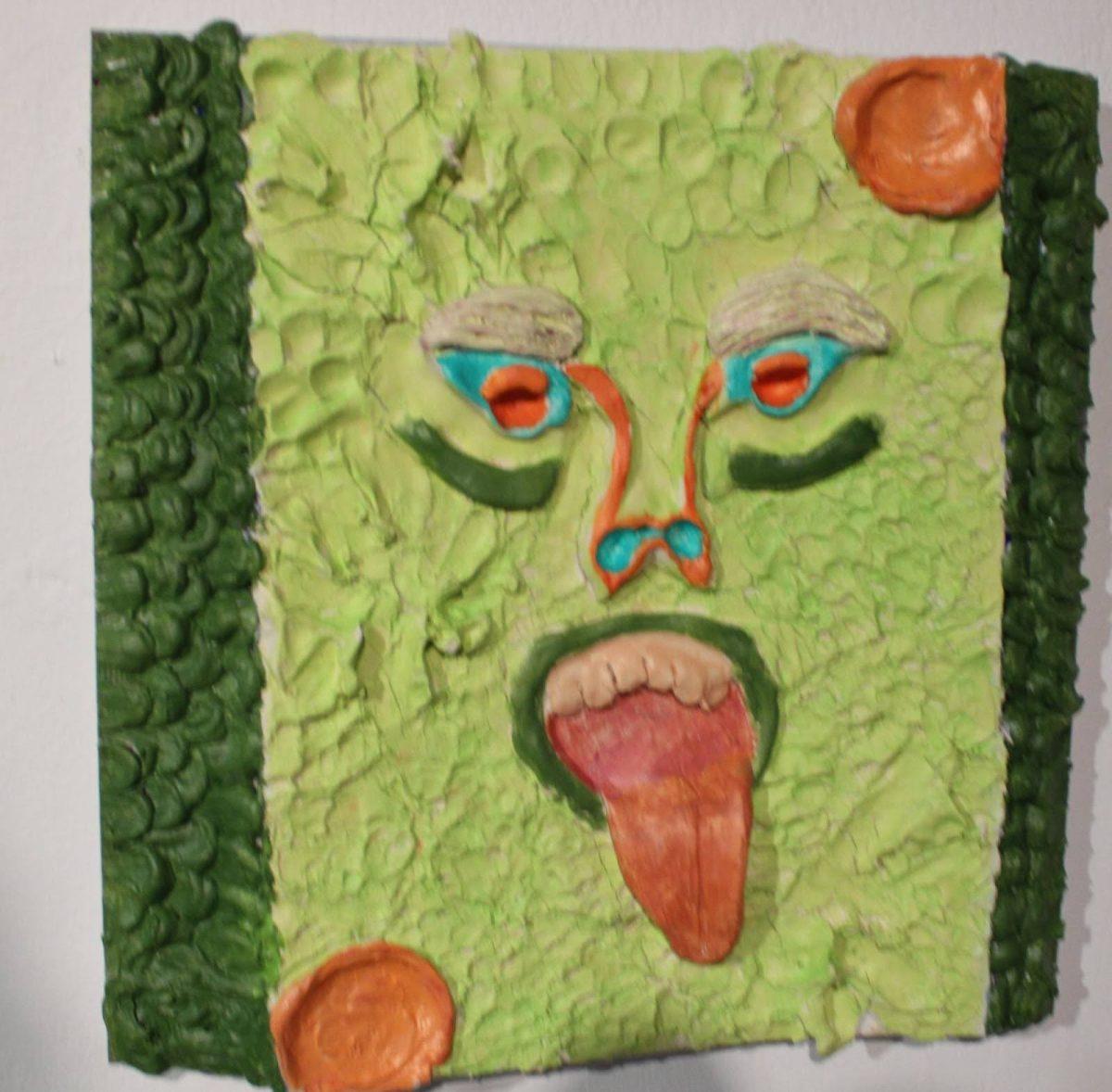
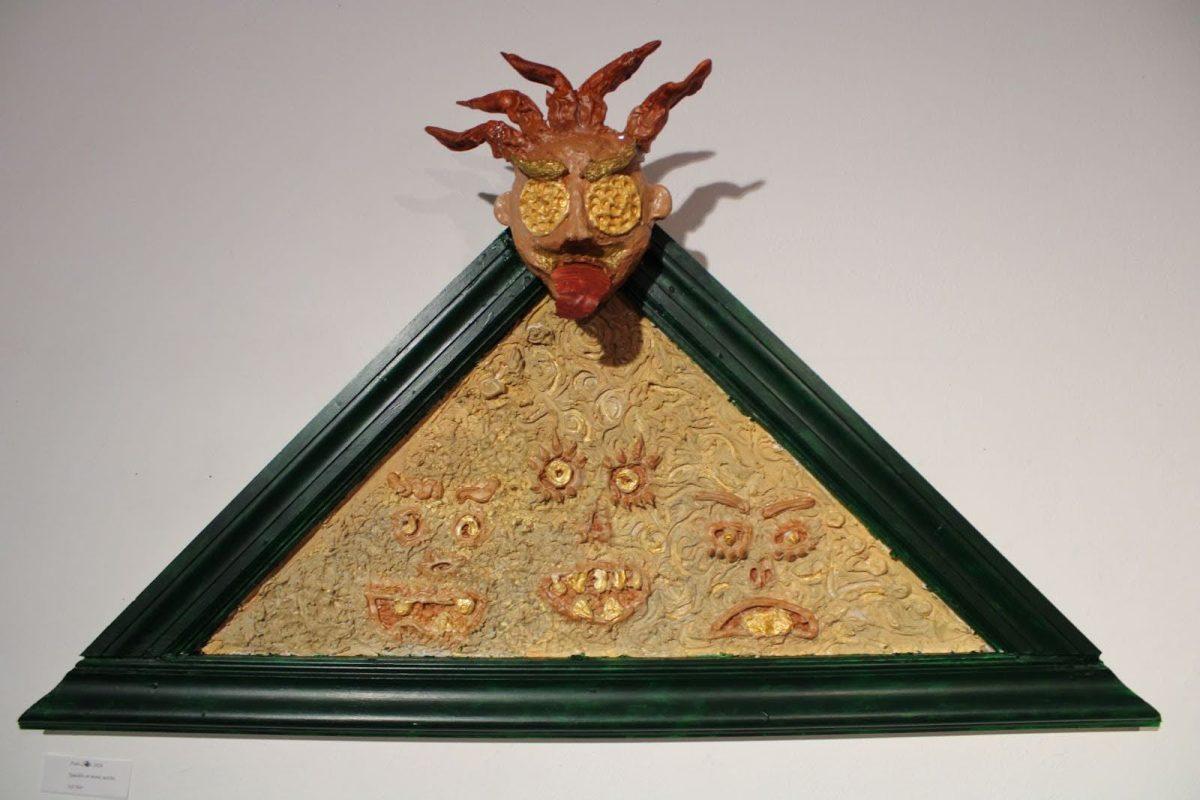
Alexandra Ketcham displayed her spackle-based sculptures of ancient Greek mythic beasts on the first floor. People typically use spackle to fix holes in their walls, but Ketcham’s use of it adds a sublime texture to each sculpture. You can see every thumbprint and fingermark on these molds. These works “emerge from the emptiness,” according to the artist’s statement and could very well have been on the pillars of the Parthenon.
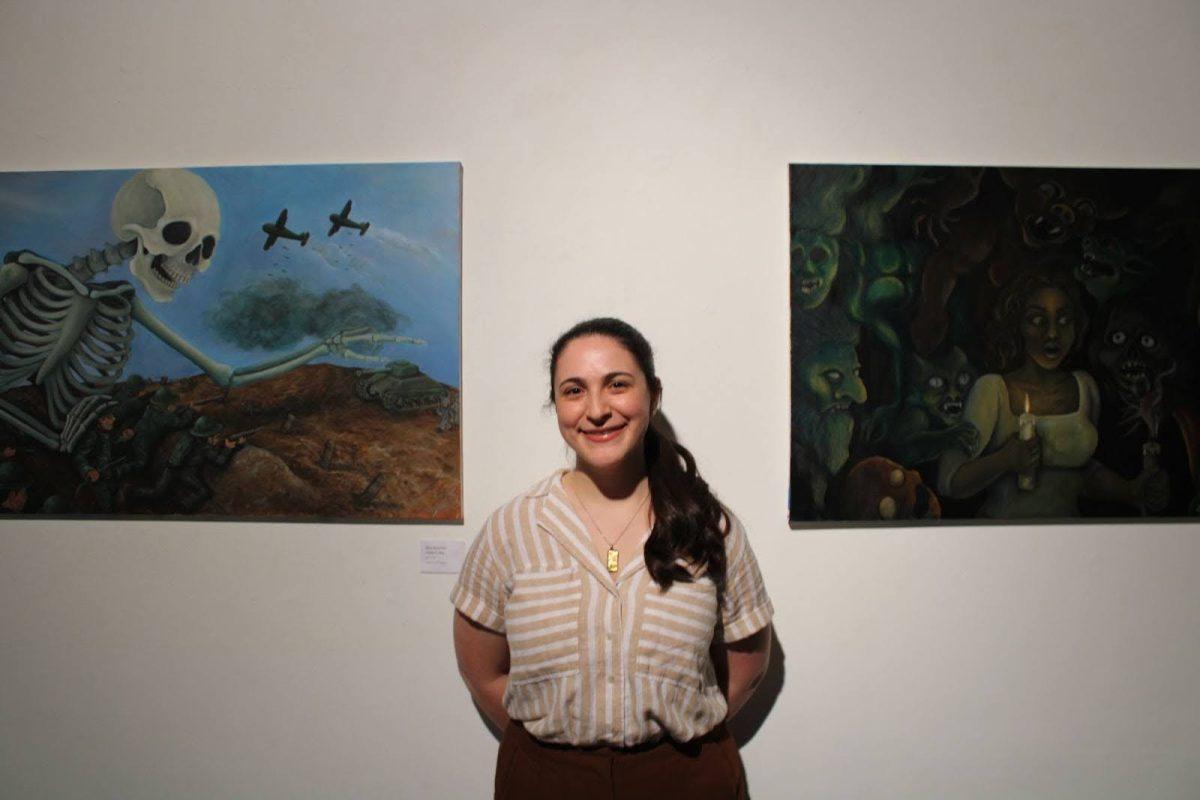
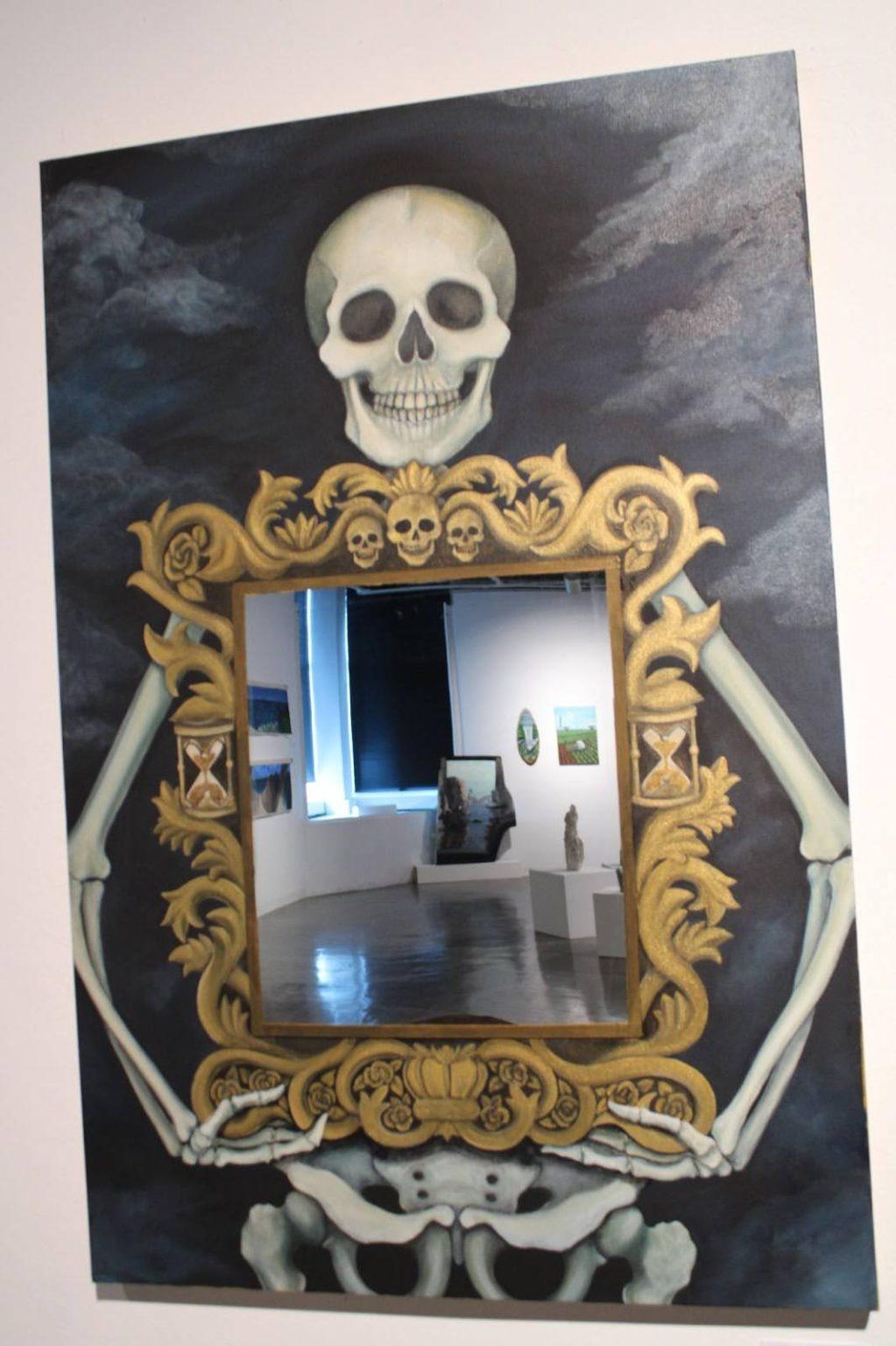
On the second floor, Bella Rosenthal’s macabre paintings immediately drew my attention. Reflecting on the “liminal space between life and death,” these paintings depict scenes of war, vampiric ritual, ghostly Victorian dance halls, and dark rooms full of beasts. Influenced by painters like Francisco Goya and Henry Fuseli, Rosenthal’s depiction of death as a realm of fantasy kept me going back to them. The most interesting piece is the skeleton holding a mirror, as if to say “look, this is where you’ll be no matter what.”
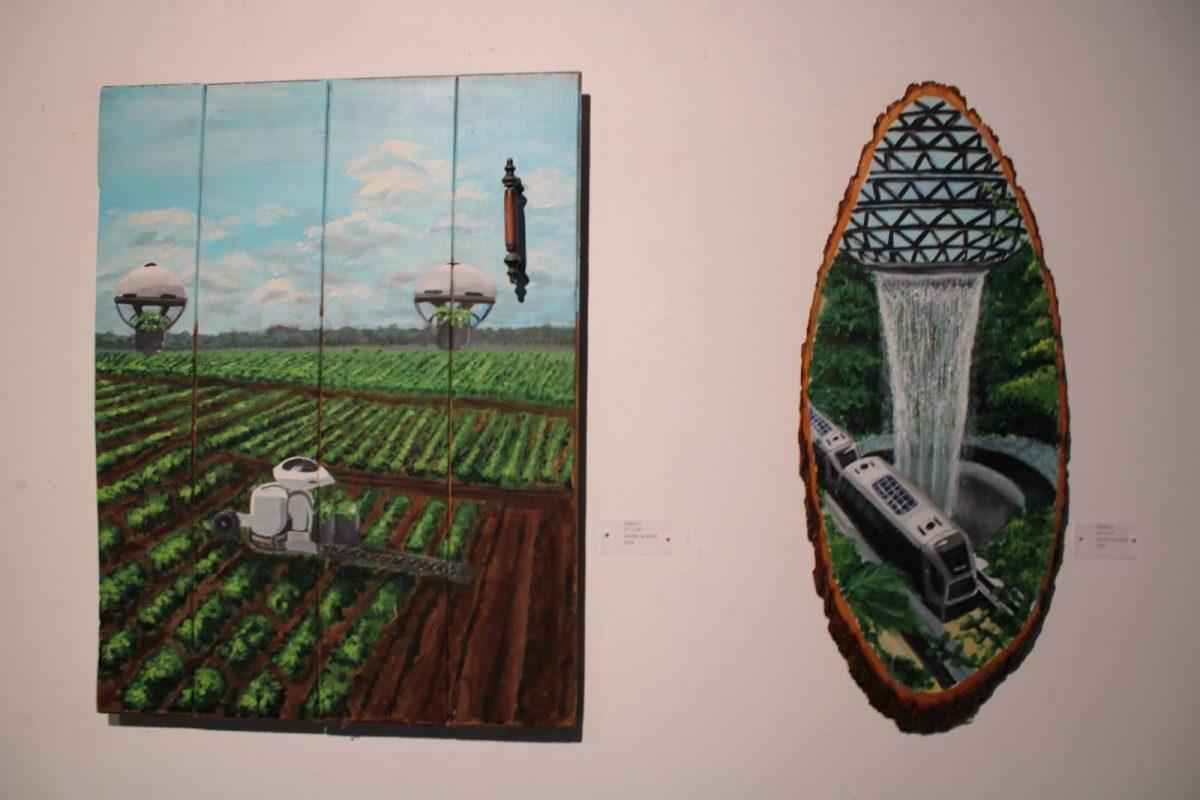
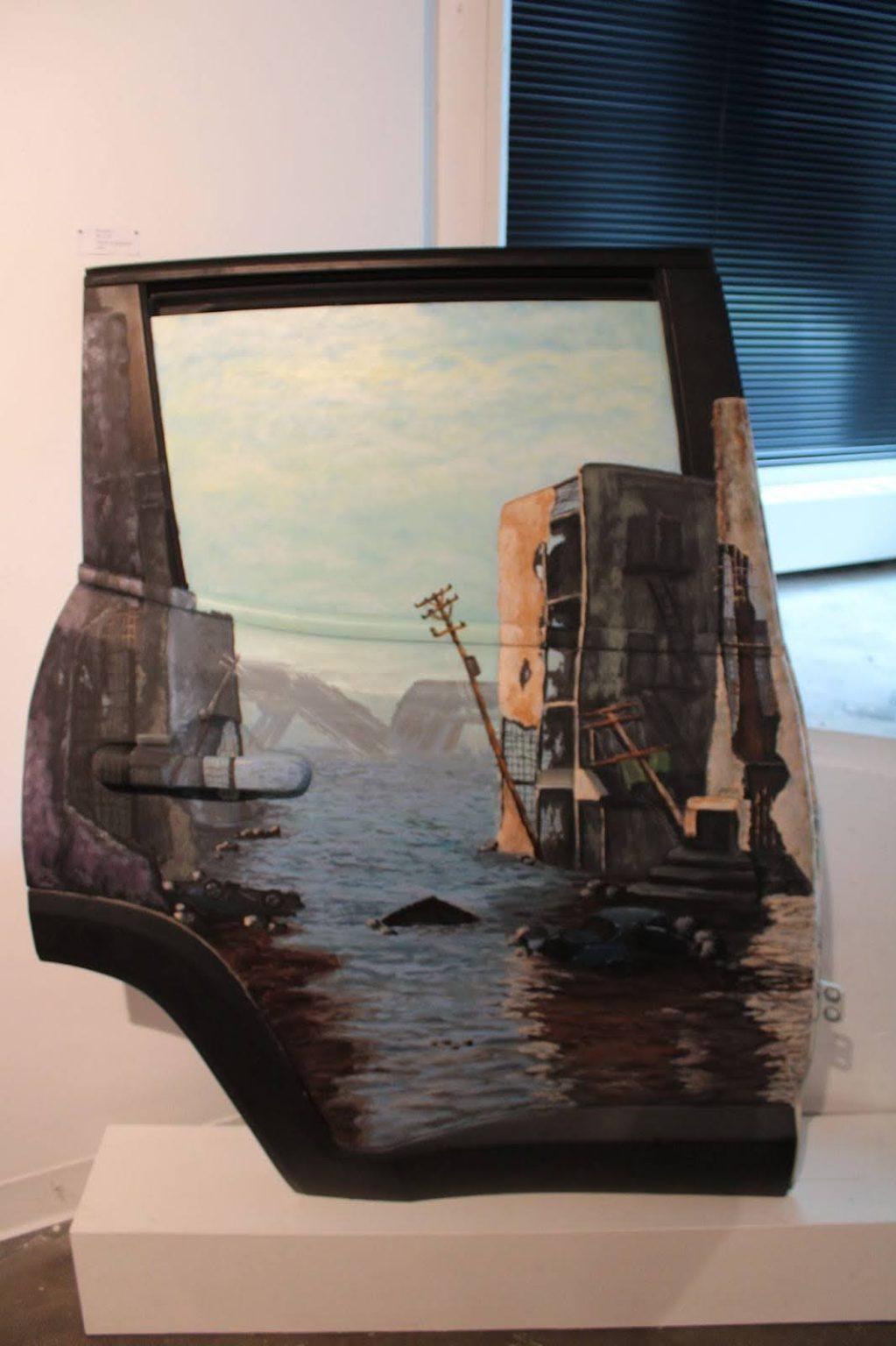
Amanda Linken’s paintings are unique, not necessarily in what they’re showing, but the material they’re painted on. Linken painted scenes of conflicting utopias and dystopias on whatever she could find: a car door, a glass panel, and a sliver of wood. It’s the way these works are expressed that tie it all together. By using real world objects, Linken is commenting on the state of our society – there exists two separate spheres of the world, being idyllic utopias and exploited dystopias.
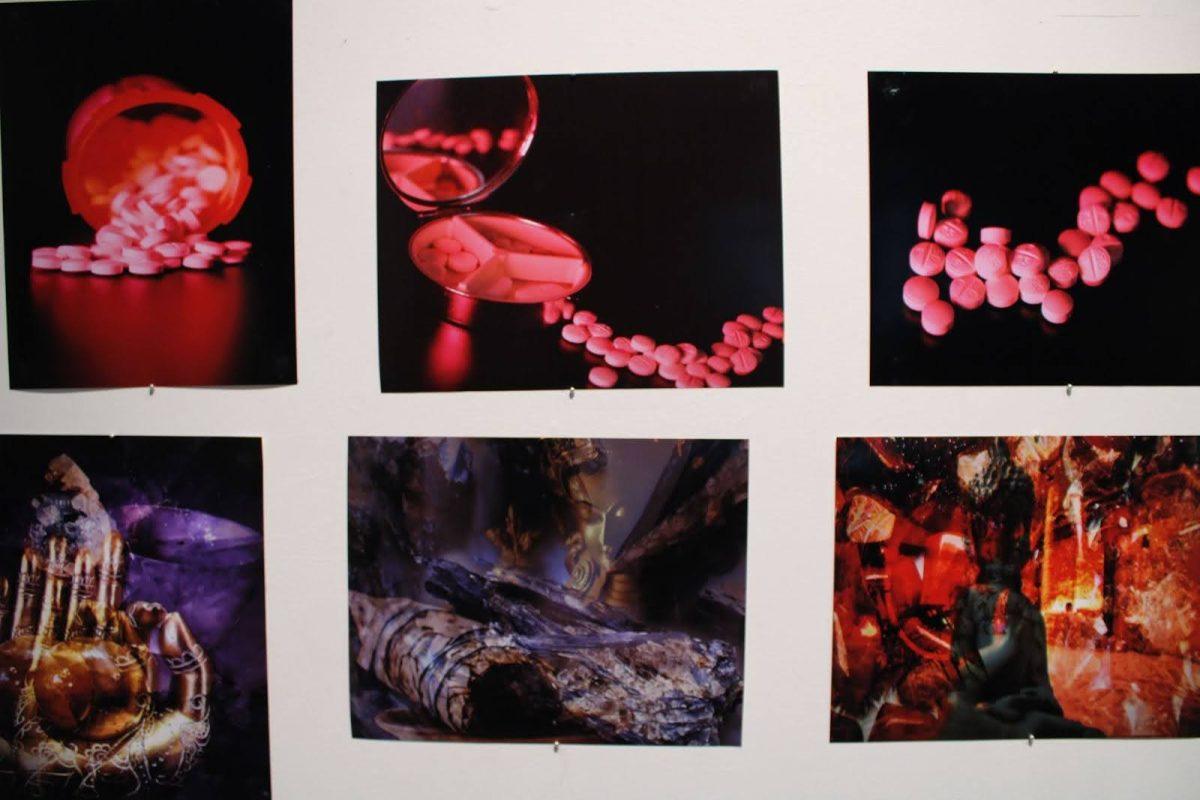
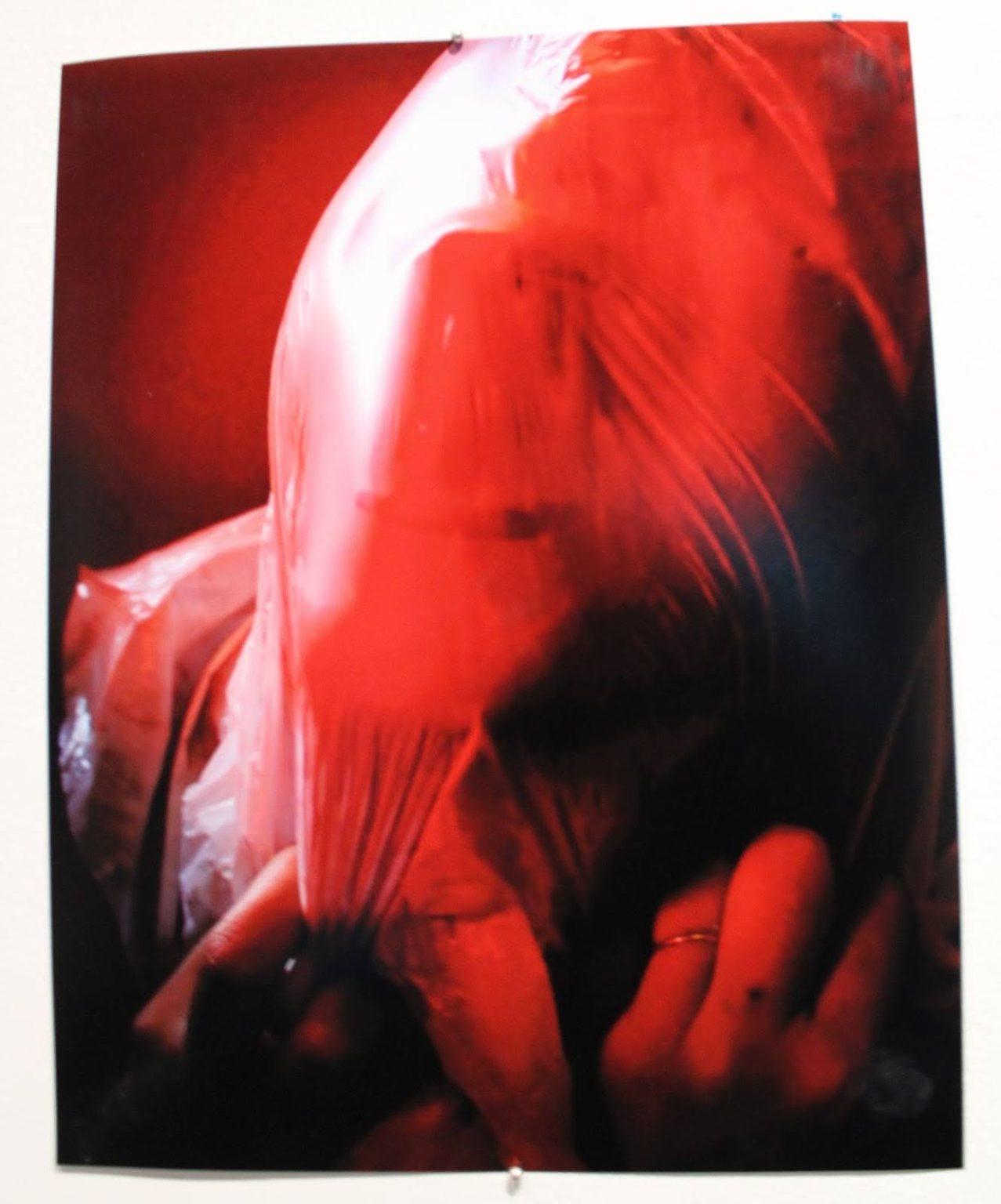
Hanging on the far wall of the third floor, Angelica Joy Abejar’s photographs focused on the trials and tribulations of mental illness. Edited in Photoshop, Abejar’s photographs highlight the feelings and realities of living with mental illness. In one set of images, we see the reality: little white pills, razors to your wrists, and platitudes on your wall and in your mind. In another, we see the feeling: a plastic bag over your head and amethyst and gold slipping around your fingertips. Through layering images, Abejar shows the overwhelming, almost impossible, task of trying to heal.
This B.A. & B.S. show featured the works of many talented OW art students. Josephine Iaccarino-Modni’s water paintings, Jordan Gonzalez’s plasticine sculptures, and Jessie Dolan’s landscapes painted from memory are worth an honorable mention.
The May 16th B.F.A. show was even better.
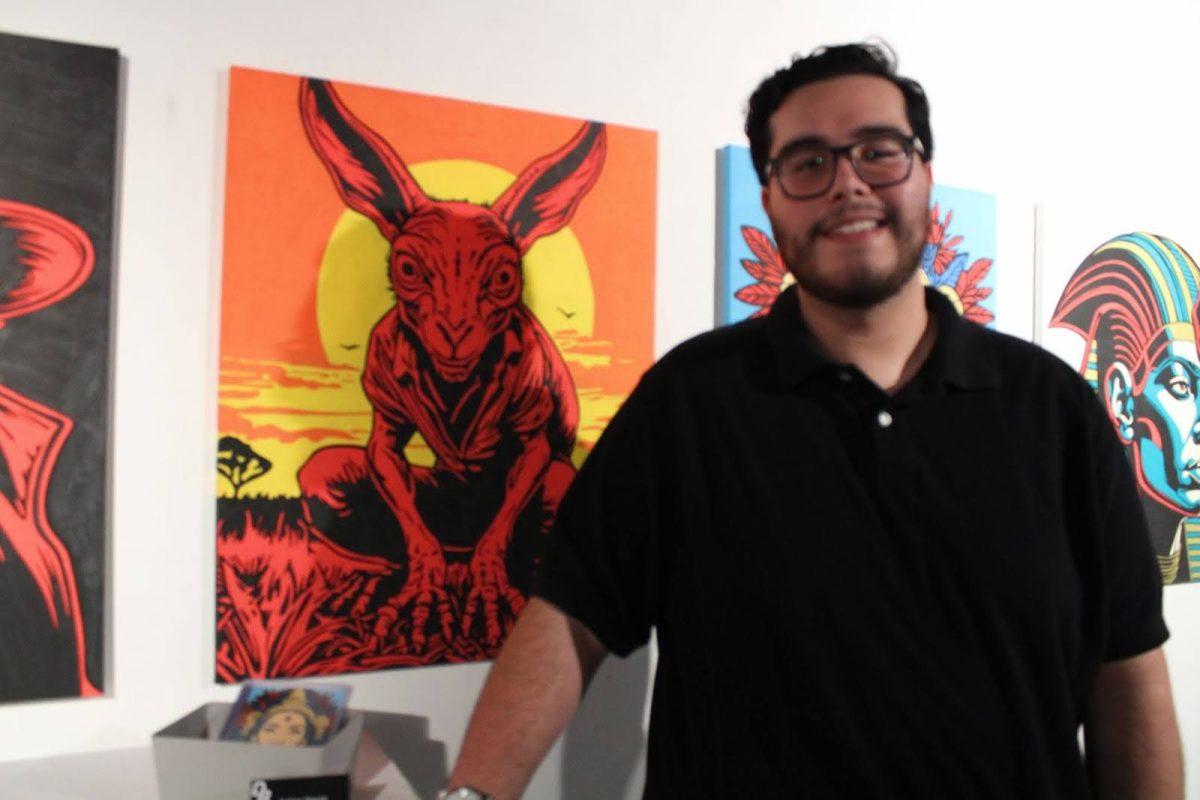

Dimitri Ramos’ comic book portraits of Greek, Latin American, and Egyptian mythological figures stood out. Feeling the influences of his family’s genealogy, Ramos has been deeply embedded in some of these cultures. “I grew up going to Greek Catholic school,” Ramos said.
My favorite was the portrait of Sisyphus. He is given a stoic face and a blood red background, accentuating his hardship and neverending labor. “My process was, I took what I did in my digital work and transferred it to canvas,” Ramos continued. Ramos has an Instagram account where he posts sketches, digital art, and photography.
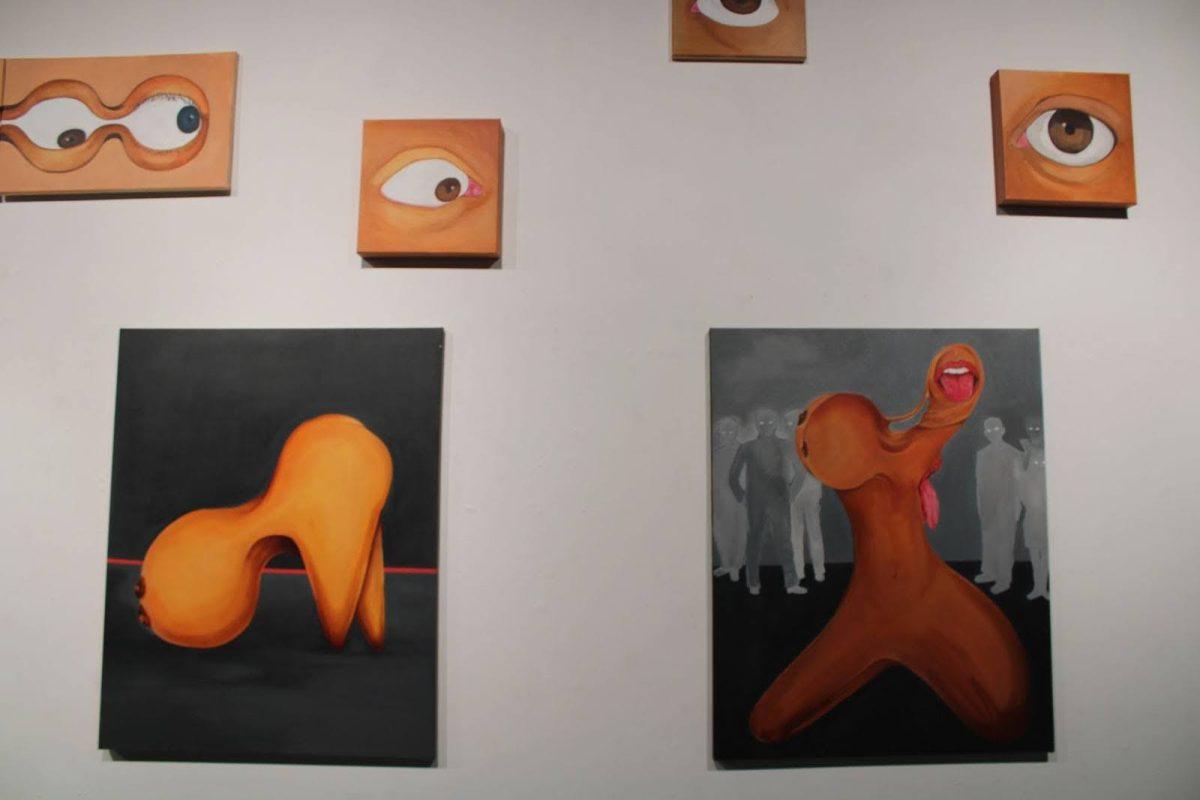
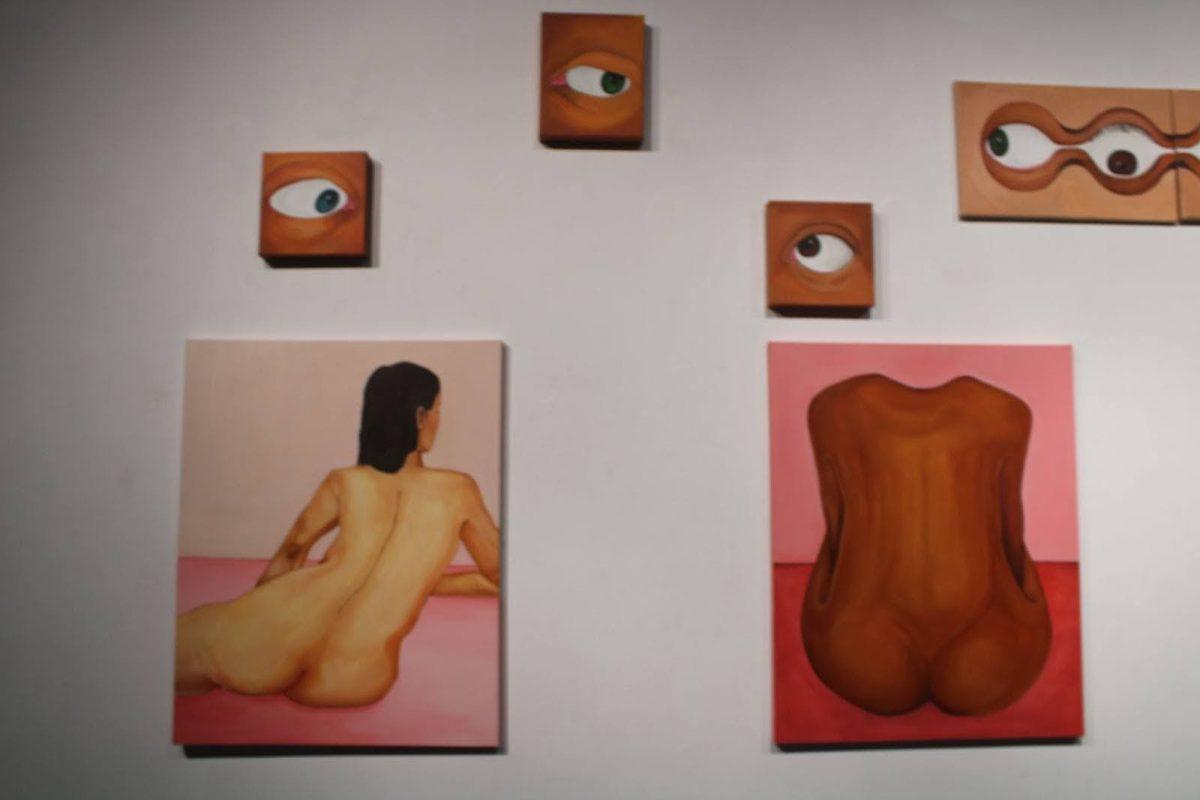
The second floor was the highlight of the B.F.A. exhibit. Kristal Carbajal’s paintings are through the lens of the male gaze, showing disfigured feminine bodies with peering eyes surrounding the art. What a man is looking at and what he sees are two completely separate things: a nude woman distorted to open, drooling mouths, nipples with no clear purpose, and long, thick legs leading nowhere. Their purpose, per the male gaze, is sexual fascination. The simple backgrounds only further highlight this difference; it doesn’t matter what is behind the bodies, all that matters is the visual pleasure of the flesh.
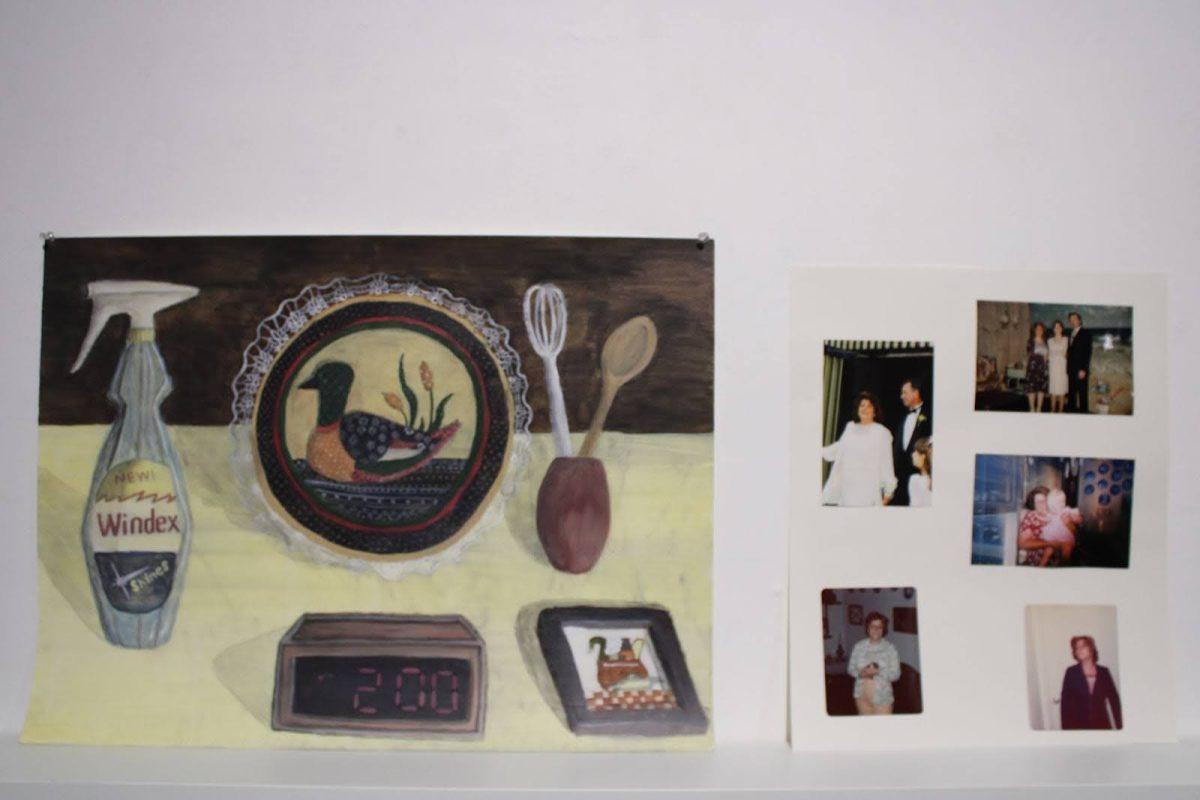
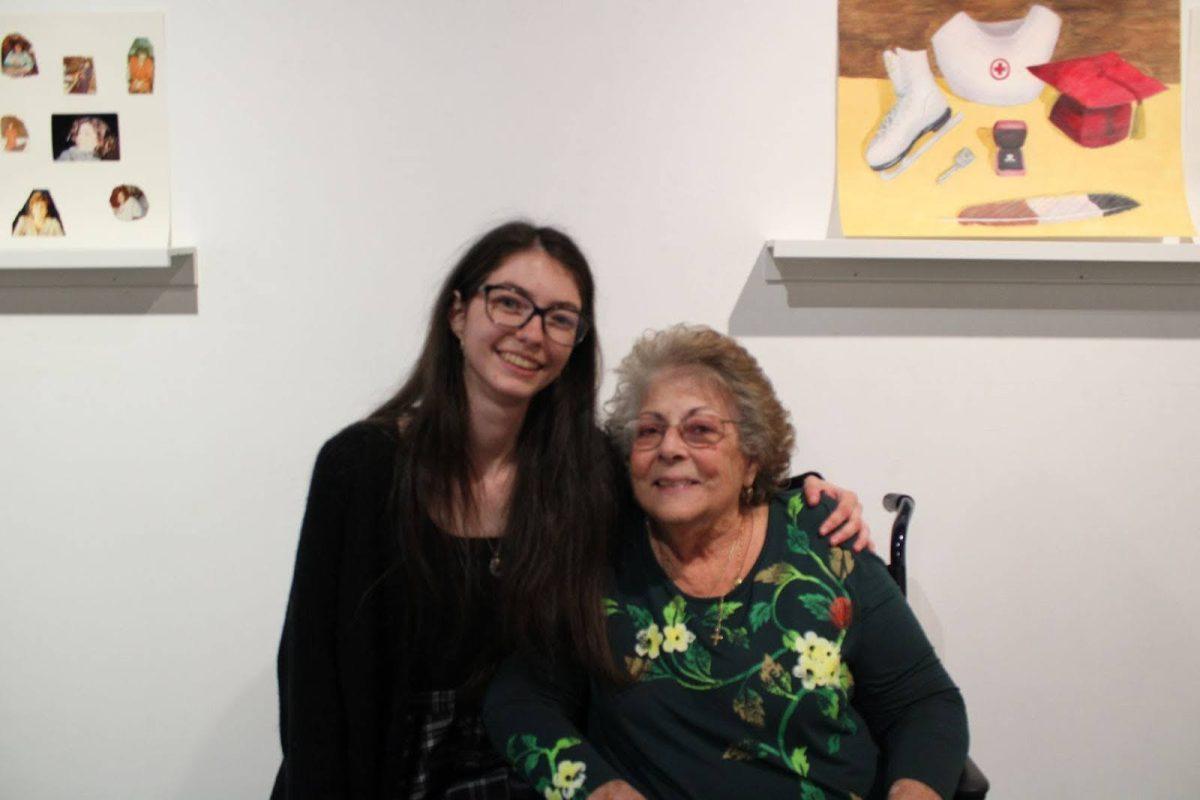
Kayla Hancock created still life paintings, accompanied by collages of old photos she picked out with her grandmother. These works depict Hancock’s grandma at different stages of her life, from infancy to young adulthood, to parenthood, and middle age. “I sat down with my grandma and we went through scrapbooks,” Hancock said. “I would ask her when was this, what was going’ on then, and she explained what period it was and what was goin’ on,’ she chuckled.
Her photo collages are an important part of thee work. There’s something about home photography and family-capturing-family. The photos are semi-candid, clearly taken with some foresight, but there’s still an element of spontaneity to them. It’s the stillness of the pictures they’re trapped in that are timeless.
Speaking of family, one of the great things about these events is seeing the families support the artists. Maybe it’s saccharine and corny, but it’s the truth. In fact, many of the students’ art (even ones I didn’t cover, like Felix Sanchez and Tommie Huertas) were about the influence of their family. And not just family, but pets too. At the B.A. exhibit, someone brought their cute little dog, all dressed in their best formal wear.

